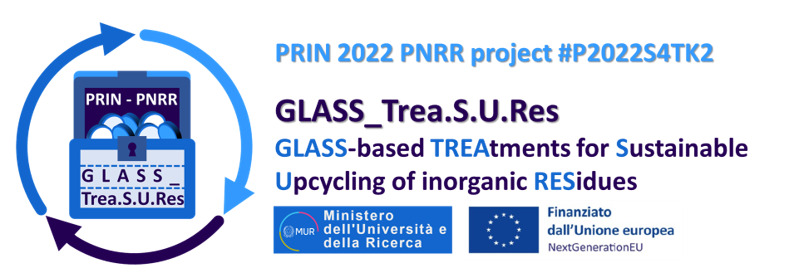Deliverables WP2
DELIVERABLE 2.1: ‘Report on manufacturing and mechanical characterization of unfired tiles’
When selecting glass-based alkali activated formulations to apply in the development of textured unfired tiles, as per milestone M2.1, steps were taken to broaden the scope of materials potentially serving as passive, decorative inserts, to include not only different types of recovered waste glass, but also the same pumice and volcanic tailings formerly utilized to supplement the activated glass in fine form. When added as coarse, sand-like fillers to the activated mixture, following the same modes and principles of the development of cementitious mortars, pumice and lapillus have the potential to enhance the mechanical properties of the original matrix, while also altering its texture and aesthetic by partially dissolving in the activated slurry, on account of their aluminosilicate-rich composition and surface-level reactivity in the alkali environment. Experimenting with lamp glass (FLG) matrices and previously selected procedure parameters, alkali activated mortars separately incorporating pumice, lapillus, and FLG cullet as coarse fillers were developed. The filler materials were sieved to obtain a granulometric range close to industry standards for mortar sands (35% d = 1 – 2 mm; 34% d = 0.5 – 1 mm; 31% d = 0.125 – 0.5 mm) and added to the activated slurries in a 20 wt% equivalent to the fine precursor, prior to mixing.
The more chemically stable monoliths were selected via tests of static submersion and boiling in water, then tested for compressive strength and density. The better performing formulations, i.e., the ones that were developed out of FLG precursor sieved to a slightly coarser grain size range (d = 45-63 µm) and were therefore less impacted by sintering and internal cracking compared to their counterparts based on a finer matrix (d < 45 µm), were shown to improve upon filler-less activated matrices and displayed mechanical properties comparable to lightweight concrete (30 – 40 MPa pressure resistance, 1.6 – 1.9 g/cm3 density), with pumice and lapillus especially contributing to enhancement of porosity.
Three aesthetically distinct FLG-based formulations were chosen among the most mechanically resistant, to act as substrates for inclusion of decorative glass fillers and development of patterned tiles. Pumice- and lapillus-added mortars, earth brown and reddish in hue respectively, were combined with coarse amber glass and soda-lime glass cullet from recovered bottles in order to approximate the aesthetics of Terrazzo-style pavement, while an off-white, FLG-based matrix incorporating FLG also as coarse cullet was chosen in order to achieve a pseudo-mosaic effect. Decorative cullet (d = 1 – 4 mm) was added in a 40 wt% equivalent to the mortar mix before stirring, and while the solid-to-liquid mass ratio for the activated slurry was maintained consistent with the procedure for pastes and mortars synthesis (0.5 grams of activator solution per gram of fine precursor), a more concentrated NaOH solution (5 M) was employed to favor activation in the larger-sized samples (80 mm x 80 mm x 10 mm) chosen for standardized mechanical properties tests and better display of aesthetic effects. The higher amount of synthetic activator applied, however, can be considered somewhat offset by more extensive implementation of high-volume inert material (i.e., the coarse cullet), diluting the matrix and keeping the proportions of utilized synthetic and recovered raw materials consistent with a sustainability-oriented framework. All formulations resulted chemically stable, passing integrity and boiling tests, and presented a distinct aesthetic that valorized the glass inserts.
DELIVERABLE 2.2: ‘Report on stabilization of pollutants, according to leaching and cytotoxicity studies’
ICP-MS readings of leachates from the lapillus-, pumice-, and coarse FLG-added mortars, gathered after 24 hours from 28-days cured crushed samples sieved under d = 2 mm (EN-12457 standard procedure), show interesting trends for release of constituent elements of the matrices such as sodium, silicon, aluminium, potassium and calcium, as well as ionic species present in lower amounts such as arsenic, antimony, and barium. When employed as coarse fillers, pumice and lapillus appear to exert a dilution effect on the matrices, substantially limiting the release of species concentrated in the glassy precursor with respect to data reported for comparable non-integrated matrices, possibly due to a lesser availability and disposition to dissolution in alkali environment owed to the coarser granulometry and less amorphous configuration of the volcanic aluminosilicates; conversely, coarse FLG application as filler leads to a slight increase in the release of the same glass components, attributable to a stronger affinity of the mortar sand to the makeup of the reactive matrix possibly leading to a more pronounced partial dissolution of its finer portion in the alkali environment.

